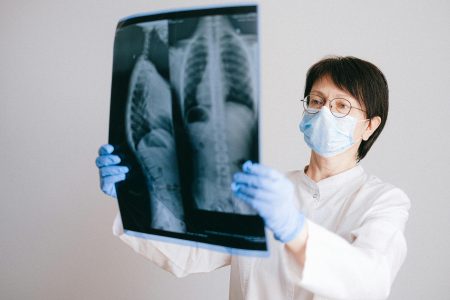Understanding the Root of Joint Pain
Joint pain can sneak up quietly or strike suddenly, but once it arrives, it tends to overstay its welcome. From knees and shoulders to wrists and hips, aching joints affect millions of people every day. But not all joint pain is the same, and neither are the solutions. Whether it stems from arthritis, injury, inflammation, or wear and tear, identifying the cause of joint pain is the critical first step before any treatment can be truly effective.
Many people assume joint pain is simply a symptom of aging, but that’s not always the case. Even young adults can suffer from joint issues due to overuse, autoimmune conditions, or trauma. Knowing the “why” behind the pain is essential before reaching for a treatment option. A thorough evaluation by a physician or orthopedic specialist is often needed to rule out underlying conditions like rheumatoid arthritis, gout, or even infections.
Conservative Options That Often Come First
Most doctors will begin with conservative treatments when joint pain is diagnosed. These include lifestyle changes such as rest, weight management, and physical therapy. Exercise might seem counterintuitive when joints hurt, but low-impact movement often helps reduce stiffness, strengthen supporting muscles, and restore mobility. Swimming, walking, and yoga are popular starting points for people looking to stay active without aggravating the pain.
Anti-inflammatory medications like NSAIDs are commonly prescribed to reduce swelling and manage discomfort. Some people also benefit from the use of topical creams or heat and cold therapies that ease symptoms without the side effects of oral drugs. These methods don’t cure the issue but can make daily life more manageable.
When Injections Offer Temporary Relief
In cases where pain persists despite basic interventions, doctors may recommend injectable therapies. Corticosteroid injections are often used to reduce inflammation in joints like the knee or shoulder. These injections can provide quick relief, but they are not long-term solutions and may be limited in frequency due to potential side effects.
Another option that has gained popularity is hyaluronic acid injections. These are particularly used in osteoarthritic joints to improve lubrication and cushion the bone surfaces. While not effective for everyone, some patients report improved joint mobility and reduced pain for several months after treatment.
Exploring Modern Regenerative Techniques
One of the most promising areas in joint pain treatment is regenerative medicine. Platelet-rich plasma (PRP) therapy and stem cell injections have emerged as innovative options designed to stimulate the body’s own healing mechanisms. PRP involves drawing a small amount of the patient’s blood, processing it to concentrate the platelets, and injecting it into the affected joint to promote tissue repair.
Stem cell therapy works on a similar principle but uses stem cells harvested from bone marrow or fat tissue to aid regeneration. While research is still ongoing, some patients with chronic joint pain have experienced substantial improvements in mobility and a delay in the need for surgery. These treatments are not yet mainstream, and insurance coverage may vary, but they represent a new frontier for those seeking alternatives to conventional care.
The Role of Surgery When Other Treatments Fail
There comes a point for some patients when conservative treatments and injections no longer provide relief. When pain becomes disabling or function is significantly impaired, surgery may be considered. Joint replacement, particularly in the hips and knees, has become a highly successful solution for end-stage joint disease. Advances in surgical techniques and prosthetics mean shorter recovery times and longer-lasting results.
For those not yet ready for full joint replacement, other surgical procedures such as arthroscopy or joint resurfacing may be viable options. These less invasive techniques aim to clean up damaged tissue or repair specific areas of the joint, providing relief while preserving as much of the original structure as possible.
Considering the Mental Side of Pain
What often gets left out of joint pain conversations is the emotional toll it can take. Chronic pain doesn’t just affect your body—it changes how you feel, think, and move through the world. Anxiety, depression, and social withdrawal are common side effects of ongoing discomfort.
A complete treatment approach should consider this psychological aspect. Cognitive-behavioral therapy, mindfulness techniques, and even group support can play powerful roles in coping with the day-to-day challenges of living with joint pain. This is not just about pain management—it’s about reclaiming your quality of life.
Personalization Is Key
There is no single “best” joint pain treatment. What works for one person might not help another. Age, activity level, medical history, severity of the condition, and even lifestyle preferences all factor into the most appropriate course of action. This is why personalized treatment plans are essential.
A one-size-fits-all approach often fails in the world of joint care. Instead, successful treatment combines medical expertise with a deep understanding of the patient’s goals. Whether it’s returning to competitive sports, walking pain-free with grandchildren, or simply enjoying a good night’s sleep, the right plan begins with listening.
Conclusion: Moving Toward Relief with Purpose
Joint pain can be frustrating, isolating, and relentless. But it is not without solutions. From basic lifestyle adjustments to cutting-edge regenerative therapy and surgical interventions, the road to relief is paved with a wide range of joint pain treatments. The key is understanding your body, being proactive, and seeking care that goes beyond just masking symptoms.
With the right guidance, joint pain doesn’t have to define your days. It’s a challenge, yes—but it’s one that can be met with clarity, compassion, and the right treatment strategy tailored just for you.







